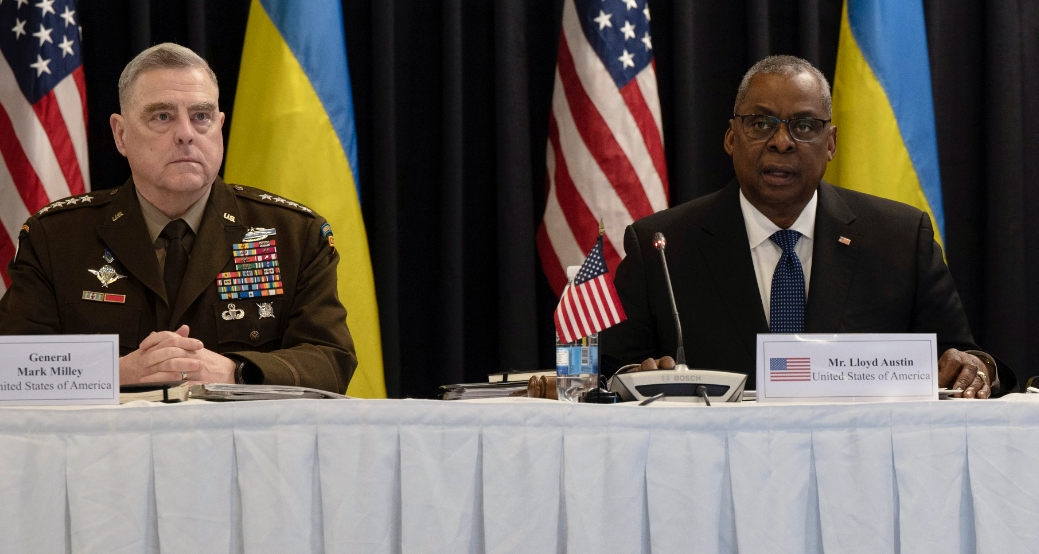Latest Round Of Ukraine Aid Critical For Expected Spring Fight, U.S. Says

Chairman of the Joint Chiefs Gen. Mark Milley (left) and Defense Secretary Lloyd Austin on Jan. 20.
The latest Ukraine aid increase comes in a limited window for Kyiv to prepare for a springtime offensive by Russia in a war that is not likely to end this year, top U.S. officials say.
Defense Secretary Lloyd Austin and Chairman of the Joint Chiefs of Staff Gen. Mark Milley announced the latest tranche of military equipment for Ukraine, which includes armored vehicles and more air defenses, following a meeting of representatives from 54 nations in Germany on Jan. 20. The newest commitments include key systems to help Ukraine fend off Russia in the country’s east but does not include the U.S.- or German-made main battle tanks that Ukraine has repeatedly requested.
“What we’re really focused on is making sure that Ukraine has the capability that it needs to be successful now, so we have a window of opportunity here,” Austin says.
The new, $2.5 billion list of systems encompasses more air defenses including munitions of the Raytheon-Kongsberg National Advanced Surface-to-Air Missile System (NASAMS) and AN/TWQ-1 Avengers. It does not include long-range MGM-140 Army Tactical Missile Systems or Ground-Launched Small Diameter Bombs that had been expected.
“This is a very capable package and if employed properly it will enable them to be successful,” Austin says.
The U.S. recently started training Ukrainians in Germany on Bradley infantry fighting vehicles and on Patriot air defense systems in Oklahoma. The U.S., Germany and the Netherlands have all committed to donating a Patriot system each. The Pentagon could not say if they are all the same variant.
Milley says that based on the weather in the region and the terrain at the front lines, there is a short amount of time to train Ukrainian troops on the armored vehicles and in maneuvering tactics before an expected Russian push in the spring.
“Depending on the delivery and training of all this equipment, it is very possible for the Ukrainians to run a significant tactical or even operational level offensive operation to liberate as much Ukrainian territory as possible,” he says.
Milley says he estimates the number of casualties on both sides to be “significantly over” his previous estimate of about 100,000. Russia has “suffered a tremendous amount of casualties” in both its regular forces and Wagner Group mercenaries, he said. But the war is not likely to be over by year’s end as the frontline is largely static, Milley says.
“It would be very, very difficult to militarily eject Russian forces from … every inch of Russian-occupied Ukraine,” he says. “That doesn’t mean it can’t happen, doesn’t mean it won’t happen, but it’d be very, very difficult.”
